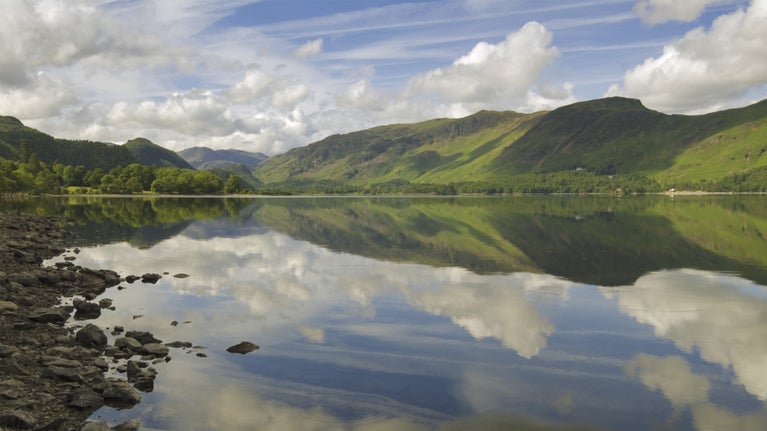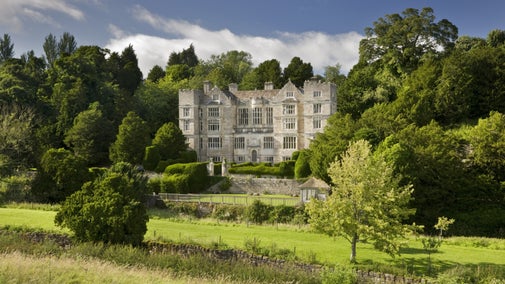
Responding to the Charity Commission's statement

- Published:
- 11 March 2021

The Charity Commission has concluded today that that there are no grounds for regulatory action against us, following complaints the Commission received about a report we published last September. Director-General Hilary McGrady responds to their statement, and offers further insight into our approach to researching and sharing the history of the places in our care.
We welcome the Charity Commission's conclusion that there are no grounds for regulatory action against us, following complaints the Commission received about the report we published on historic slavery and colonialism links at the places we care for. We are also pleased that the Commission is satisfied we gave due consideration to how the report and the research behind it would further our charitable purpose.
Before we move forward, I think it is important to state for you – our staff, volunteers and supporters – where I stand when it comes to researching and sharing the history of the places in our care.
The National Trust has an unparalleled role as a custodian of the natural and cultural heritage of England, Wales and Northern Ireland. No other UK organisation cares for so many places spanning such a vast period or geography – from the 60-million-year-old rocks of the Giant’s Causeway to Paul McCartney and John Lennon’s childhood homes in Liverpool.
A treasury of houses, gardens, precious places and works of art have been entrusted to our care. They represent a shared inheritance and speak to our collective history, character and identity. We know this is an extraordinary privilege, and with this privilege comes a deep sense of responsibility and commitment.

It is our history in its entirety that makes us who we are as nations and as people. We all have a right to explore it for ourselves, to help us find our own place in the world. And let’s not forget that our collections also speak to world history and the history of other nations and people.
There is so much to be proud of in our history. The wonderful collection of places the Trust cares for, that have been cherished for generations before us, is a testament to that. However history can also be challenging and contentious. It is surely a sign of confidence, integrity and pride that while we can celebrate and enjoy history we can also explore and acknowledge all aspects of it. The National Trust is at its best when we capture this complexity – when we present facts and material evidence in ways that inspire curiosity, inquiry, learning and sharing.

We had a very strong response to the interim report we published last September on the evidence of links between places in our care and colonial history, including historic slavery. This included thousands of responses from the public, our staff and volunteers, academics, historians and media commentators. The views expressed have been as wide-ranging and diverse as they have been numerous. We have received many messages of support, but undoubtedly the report and some of the commentary and debate last September caused genuine concern for some supporters.
It is worth remembering why we published this report. To look at an aspect of history that is there in many of the places we care for. To look at the material evidence we have and to ensure that we take account of it in the way we look after and present the places in our care. To be transparent and factual about this.
We have listened and considered the many responses, and been reminded that researching history and sharing it can stir up strong feelings and views.

As I said at a recent meeting of heritage leaders in England, I am passionate about culture being a force for good in society. Having lived all of my life in Northern Ireland I know only too well the impact of allowing cultural identity to become a source of division. I want the Trust to be dedicated to finding ways of making the arts, culture and heritage a vehicle for bringing people together, for shared acknowledgement, respect and understanding.
The National Trust must continue to take a wide-ranging and evidence-based approach to history. We have been reminded that we must work hard to place particular themes such as historic slavery and colonialism in a broad context at the places in our care. These are places that should help curious people come face to face with history and feel they can arrive at their own views. For these reasons, we support a ‘retain and explain’ approach to history, and will work with government and other organisations in culture and heritage as they develop their own thinking.
This approach will underpin our research, interpretation and programming and help us to maintain an open and positive relationship with our broad range of stakeholders and members, present and future.
We are developing a programme of rounded interpretation at properties. Balance and integration will be at the heart of this programme. Our curatorial teams continue doing vital work with properties to make sure we have the highest standards of presentation and interpretation at these places. We are here for all of history – for everyone, for ever.

You might also be interested in
Addressing our histories of colonialism and historic slavery
Read our report on colonialism and historic slavery in the places and collections we care for and discover how we’re changing the way we approach these issues.

Churchill and Chartwell: telling the whole story
Celia Richardson, Director of Communications, writes about why we included Chartwell in our report into colonialism and historic slavery, and reveals how we're telling Chartwell's whole story.

About the National Trust today
Discover more about our legacy, people and values as a conservation charity. We protect historic places and green spaces while opening them up for everyone, for ever.
